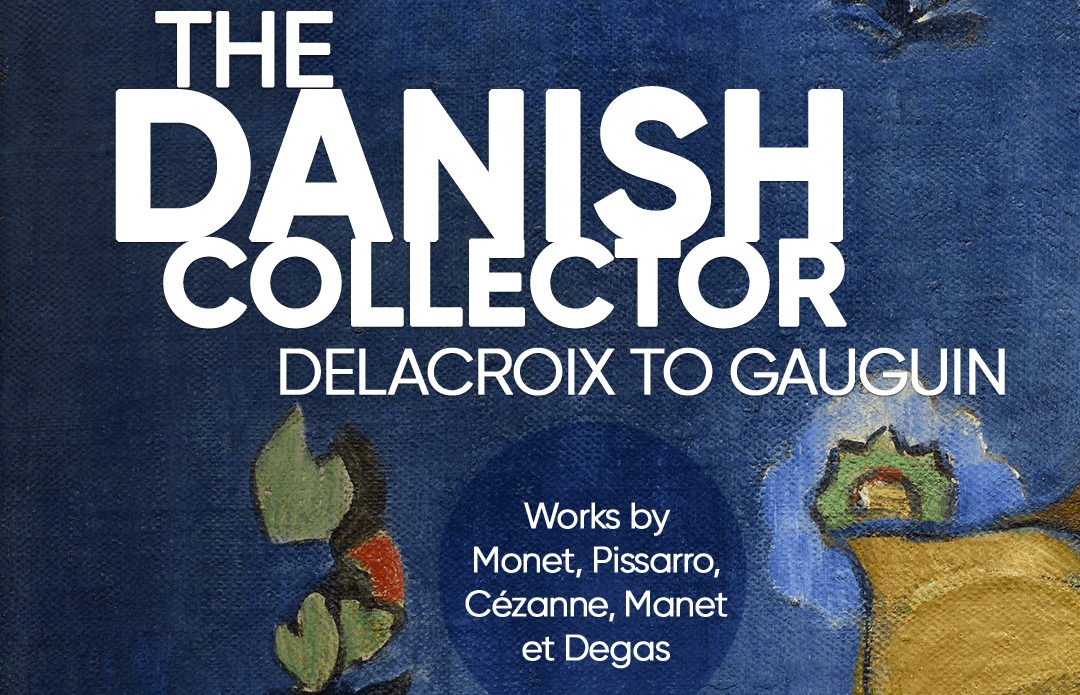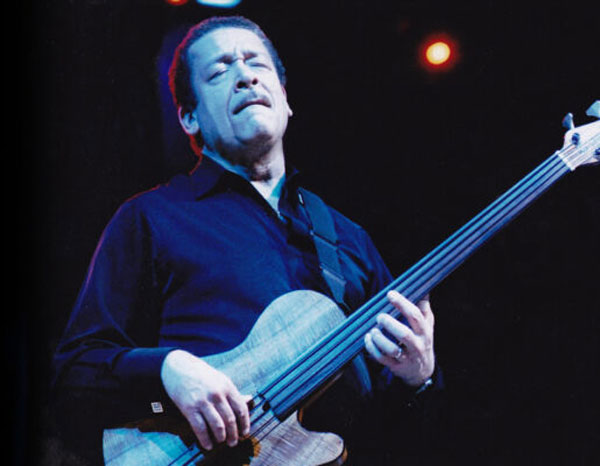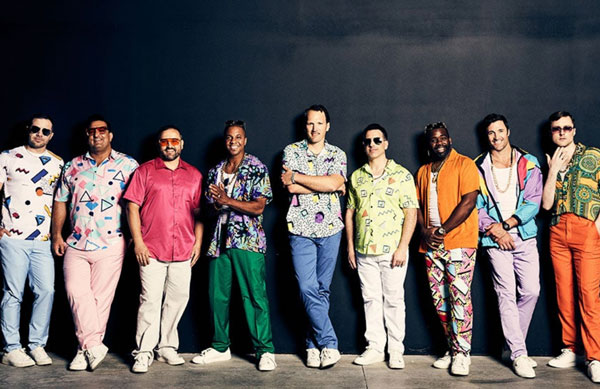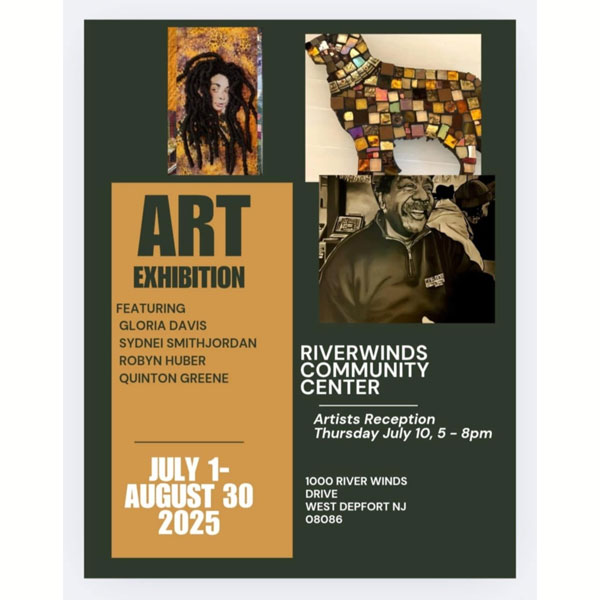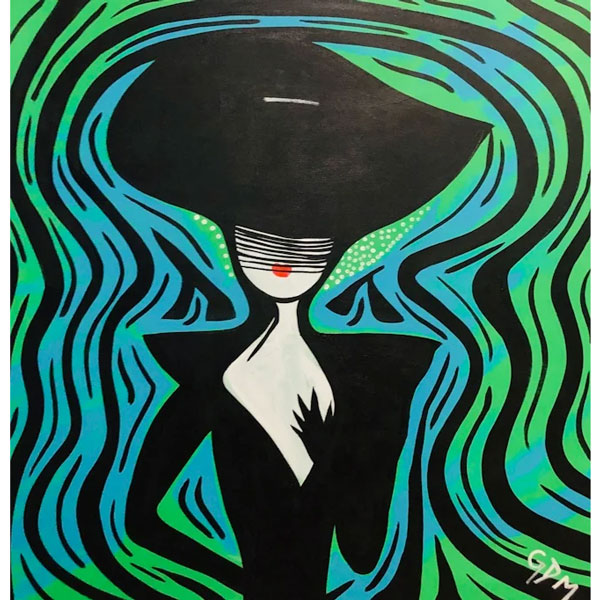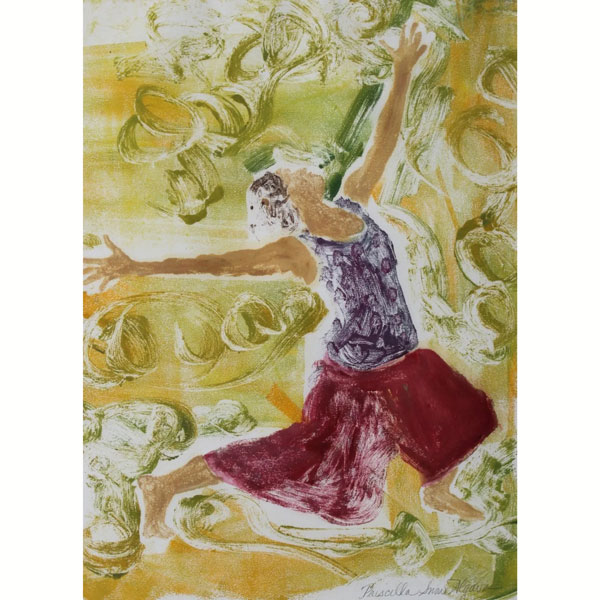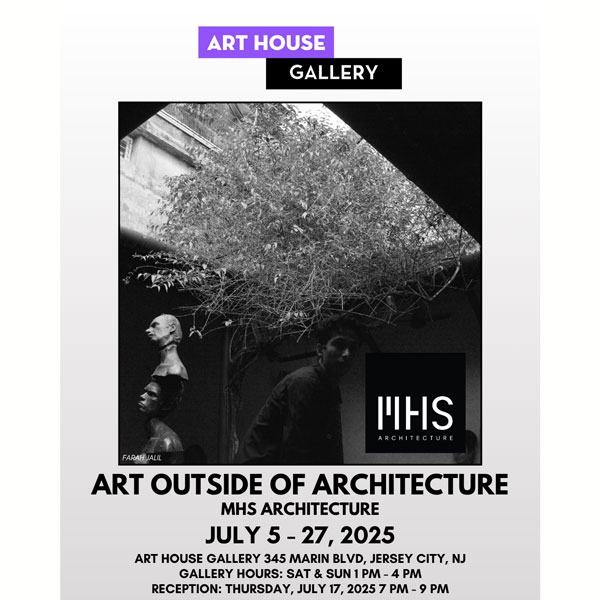By Shen Shellenberger, JerseyArts.com
originally published: 05/14/2019

History is a powerful force, bringing the past forward and revealing clear connections between the world today and events and experiences that occurred before.
So, when history beckoned, Rowan University Art Gallery responded with its current exhibition “Women Defining Themselves: The Original Artists of the SOHO 20,” on view at the Gallery at 301 High Street in Glassboro through July 27.
Gallery Director Mary Salvante explained why she and Andrew Hottle, Art Historian and Professor at Rowan and the exhibition curator, chose to showcase works by the founding members of the SOHO 20 art collective at this time.
“For one thing, 2019 marks the 100th anniversary of women getting the right to vote and then voting for the first time in 2020,” she said. “That has been on my mind.”
She went on to say that “The Sister Chapel,” a work of monumental size and significance, was recently “relaunched” at Rowan. Conceived in 1974 by artist Ilise Greenstein to illustrate from a feminine perspective the vast range of women’s achievements, the work was first shown in 1978 (another notable anniversary of 40+ years) at MoMA P.S.1 and then only a couple more times until 1980. After that, “The Sister Chapel” remained out of sight until it was returned to public view at Rowan in 2016.
Both Salvante and Hottle mentioned a generous donation from the Shirley Gorelick Foundation that allowed Rowan to construct a wood floor and redo the tent designed by Maureen Connor to accommodate the twelve canvases and the abstract ceiling.
“Now it really feels like you’re walking into a room,” Salvante said.
Aside from the aesthetic value, the improvements serve a practical purpose, providing a stable home for the artwork and ensuring that that the “The Sister Chapel” will continue as a permanent installation at Rowan.
Our brief trip down Memory Lane now circles back to where it began and refocuses on the women’s art collective SOHO 20 and the “Women Defining Themselves” exhibition that commemorates the founding members and the group’s 45th anniversary.
Although not the first women’s art cooperative, SOHO 20 emerged at an ideal time, when new ways to make art were as bountiful as the people making it. “It had a lot to do with creating movements.” Salvante said. “Artists were free to experiment, to really shake things up.”
And the place was right as well.
“Back in the day, many of the New York neighborhoods were just falling apart. Rents were cheap. People were buying up abandoned buildings and turning them into artist spaces and galleries,” Salvante said. “Soho was ‘art central.’”
For women in art, though, another side to the story was taking hold.
“Women were not widely respected as artists,” Hottle said, “and there was already this situation where a lot of the mainstream galleries were not representing many women.”
So, women artists, like those who were part of SOHO 20, opened their own artist-run galleries. And, for a while, the idea flourished, giving these young, innovative artists a place to show their work.
Which was really the point. They were serious and passionate about making art. They were trying new media and new techniques. They were testing the boundaries of subject matter and presentation. And they were producing high-quality, relevant work.
They wanted their work to be seen.
But those endeavors also met with criticism. “Artist-run galleries were considered inferior,” Hottle said. “The sentiment among art critics was is that these were vanity spaces.”
“In fact, though, they were truly activist spaces,” he said. “You had to do it that way in order for your work to be shown at all.”
“And the real irony of this situation is that critics were reviewing these artists’ work – sometimes quite favorably – and never making the connection that they wouldn’t have seen the work if it hadn’t been shown in these galleries.”
Preservation was an integral objective for Hottle when he was assembling works for the exhibition. “I was trying to track down artists and their work and I often ran into the situation where a house had been cleaned out and art had been thrown away.”
“A large part of this is an attempt to halt the loss of these things,” he said. “At some point, my scholarly research turned into activism.”
“The least we can do is insert these works into history,” he said.
“This art was made to be seen,” he said. “We’ve made that happen.”
I attended the artist reception on May 4 and was delighted to see several of the SOHO 20 artists there. I was also pleased to learn that SOHO 20 is still an active entity and that many of its original members are still making art.
Both Elena Borstein and Sharon Wybrants continue to work as painters. Cynthia Mailman is active as an artist, now mostly making collages. Rosalind Shaffer creates ceramic sculptures And, Marge Helenchild, who in the 1970s turned to performance-based work, has lately been performing her personal coming-out story, “I’m Not That Girl.”
In addition to bearing witness to the group’s longevity and its place in both the past and present, what was remarkable to me about the exhibition was its wide range – in subject matter, in media, and in intention. Some works are meant to convey beauty, some tell a story, some are dark, some are lighthearted, some spark a reaction, some make us squirm. But each piece comes from an individual place and is an expression of the artist’s ideas and beliefs.
“In many cases, the work is from personal collections,” Salvante said. “And a lot of it is early work. But you look at these pieces and it’s hard to know if it is an older work or recently created.”
And the fact is, Salvante said, young women artists today reap the benefits from those who worked in those early days.
“The older work seems familiar,” she said. “It speaks to what young women artists are doing now.”
“They have been influenced by these older artists without even realizing it.”
TOP PHOTO: Painting: Sylvia Sleigh (1916–2010), "SOHO 20 Group Portrait," 1974, oil on two canvases. Collection of the University of Missouri–St. Louis, Gift of Robert and Lois Orchard.
Artists/others pictured in front of the painting: Sharon Wybrants, Elena Borstein, Cynthia Mailman, Marge Helenchild, and Rosalind Shaffer.
About the author: Jersey Girl, music lover, and culture geek – Shen Shellenberger has made a career of her life-long love of the arts. From her jobs at WXPN-FM and the Philadelphia Museum of Art, to her 25 years as a freelance writer, she instills her Jersey-born roots in all she does. Whether it’s the beauty of a classic painting, the dynamics of contemporary dance, or the raw energy of rock ‘n’ roll, Shen brings her perspective to whatever she covers.
Content provided by
Discover Jersey Arts, a project of the ArtPride New Jersey Foundation and New Jersey State Council on the Arts.
FEATURED EVENTS
To narrow results by date range, categories,
or region of New Jersey
click here for our advanced search.



